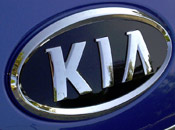2011 Kia Soul Insurance Quotes – 9 Tips to Save
Trying to find the cheapest insurance rates for your Kia Soul? Have you had enough of robbing Peter to pay Paul to pay your car insurance bill each month? You are in the same boat as the majority of other car owners.
Online insurance companies like State Farm, Geico and Farmers Insurance continually bombard you with ad campaigns and consumers find it hard to avoid their marketing magic and effectively compare rates to find the best deal.
Comparison of Insurance
There are several ways you can shop for Kia Soul insurance and some are more efficient than others. You can waste a few hours (or days) discussing policy coverages with insurance companies in your area, or you could save time and use the web to get rate comparisons in just a few minutes.
Most of the larger companies are enrolled in a marketplace that allows shoppers to submit one quote, and at least one company can give them a price for coverage. This saves time by eliminating quote forms for each company.
To compare 2011 Kia Soul rates now click to open in new window.
The single downside to doing it this way is you don’t know exactly the companies you want pricing from. If you would rather choose specific providers to compare prices, we put together a list of the cheapest insurance companies in your area. Click to view list.
Whichever method you choose, ensure you’re using the exact same coverages and limits for every company. If you compare differing limits you can’t possibly make an equal comparison. Just a small difference in coverage limits can result in a big premium difference. It’s important to know that quoting more will improve the odds of getting a lower rate.
Don’t assume everyone needs the same coverage
When it comes to buying the right insurance coverage for your vehicles, there really is no cookie cutter policy. Your needs are not the same as everyone else’s and a cookie cutter policy won’t apply. These are some specific questions could help you determine if you will benefit from professional help.
- How much can I save by bundling my policies?
- If my 2011 Kia Soul is totaled, can I afford another vehicle?
- Where can I get insurance after a DUI in my state?
- I have health insurance so do I need medical payments coverage?
- What if I owe more than I can insure my car for?
- How many claims can I have before being cancelled?
If it’s difficult to answer those questions, then you may want to think about talking to a licensed agent. If you want to speak to an agent in your area, complete this form or you can also visit this page to select a carrier
Specific coverage details
Having a good grasp of auto insurance can help you determine the best coverages for your vehicles. Auto insurance terms can be difficult to understand and even agents have difficulty translating policy wording. Below you’ll find typical coverage types available from auto insurance companies.
Liability insurance
Liability insurance provides protection from damage that occurs to a person or their property in an accident. It protects you against claims from other people, and doesn’t cover your injuries or vehicle damage.
It consists of three limits, bodily injury for each person, bodily injury for the entire accident, and a limit for property damage. As an example, you may have limits of 25/50/25 which stand for $25,000 in coverage for each person’s injuries, a limit of $50,000 in injury protection per accident, and property damage coverage for $25,000.
Liability coverage pays for things like court costs, medical expenses and medical services. The amount of liability coverage you purchase is your choice, but it’s cheap coverage so purchase as high a limit as you can afford.
Protection from uninsured/underinsured drivers
Your UM/UIM coverage protects you and your vehicle when the “other guys” are uninsured or don’t have enough coverage. Covered losses include injuries to you and your family and damage to your 2011 Kia Soul.
Since many drivers have only the minimum liability required by law, it doesn’t take a major accident to exceed their coverage limits. That’s why carrying high Uninsured/Underinsured Motorist coverage should not be overlooked.
Coverage for collisions
This coverage pays for damage to your Soul from colliding with another car or object. A deductible applies and then insurance will cover the remainder.
Collision coverage protects against things like sideswiping another vehicle, hitting a mailbox and crashing into a building. Collision is rather expensive coverage, so consider removing coverage from older vehicles. Drivers also have the option to increase the deductible to save money on collision insurance.
Medical expense insurance
Personal Injury Protection (PIP) and medical payments coverage kick in for expenses like prosthetic devices, hospital visits, funeral costs, dental work and ambulance fees. They are utilized in addition to your health insurance policy or if there is no health insurance coverage. They cover you and your occupants and will also cover being hit by a car walking across the street. PIP coverage is not an option in every state but it provides additional coverages not offered by medical payments coverage
Comprehensive (Other than Collision)
Comprehensive insurance coverage pays for damage caused by mother nature, theft, vandalism and other events. You first have to pay a deductible then your comprehensive coverage will pay.
Comprehensive coverage pays for things like a tree branch falling on your vehicle, damage from getting keyed, a broken windshield, damage from flooding and hitting a bird. The most you’ll receive from a claim is the actual cash value, so if it’s not worth much more than your deductible consider removing comprehensive coverage.

